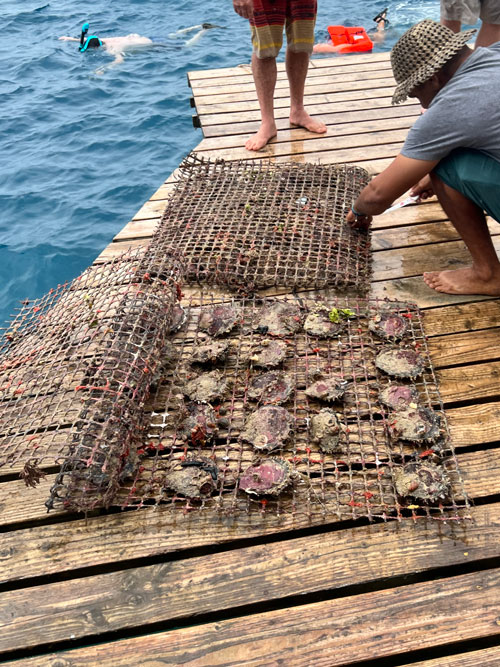The life of a Tahitian pearl farmer demands persistence and patience during the 2 years of an oyster’s development into a pearl-bearing mollusk. Although the process is gradual and the farmers diligent, there is still risk involved. In general, after three years of growing, only 60% of a farm’s oysters will produce a pearl and out of that, only 10% will be round.
An oyster starts life as a tiny organism called “spat.” The spat babies take 1.5 – 2 years to become anything close to a potential pearl-bearing mollusk but once they reach that stage, they are strung on lines attached to protective grids and lowered into the water to begin their evolution. Pearl farmers lose many oysters to marine nibblers.
Baby oysters need about 1.5-2 years to mature enough to begin the pearl-creating process.

Pearl farmers wash their oysters. When the oysters are pulled up from the ocean, they carry attached barnacles and other marine organisms. This muck is rinsed off and then they are lowered back to their watery nests.

One farm told us they check 5,000 oysters a day to make sure they are healthy enough to produce. Sometimes, when shells are slightly opened, tiny crustaceans crawl out. These tiny beings have taken refuge inside the oyster to avoid predators. They are returned to the ocean to await their fates.

Tahiti and its neighboring chain of islands is blessed with pristine ocean water allowing farmers to produce the world’s most beautiful pearls. I’ve never seen such clean water and air. As you can see from the photos, the pearl colors reflect the vibrant hues of their above-ground native habitats.
One cool thing I learned was the pearl’s color comes from the inside of the oyster shell. That’s in the next installment.
Warm regards from the studio.
Diana